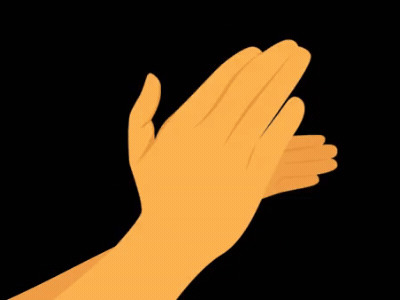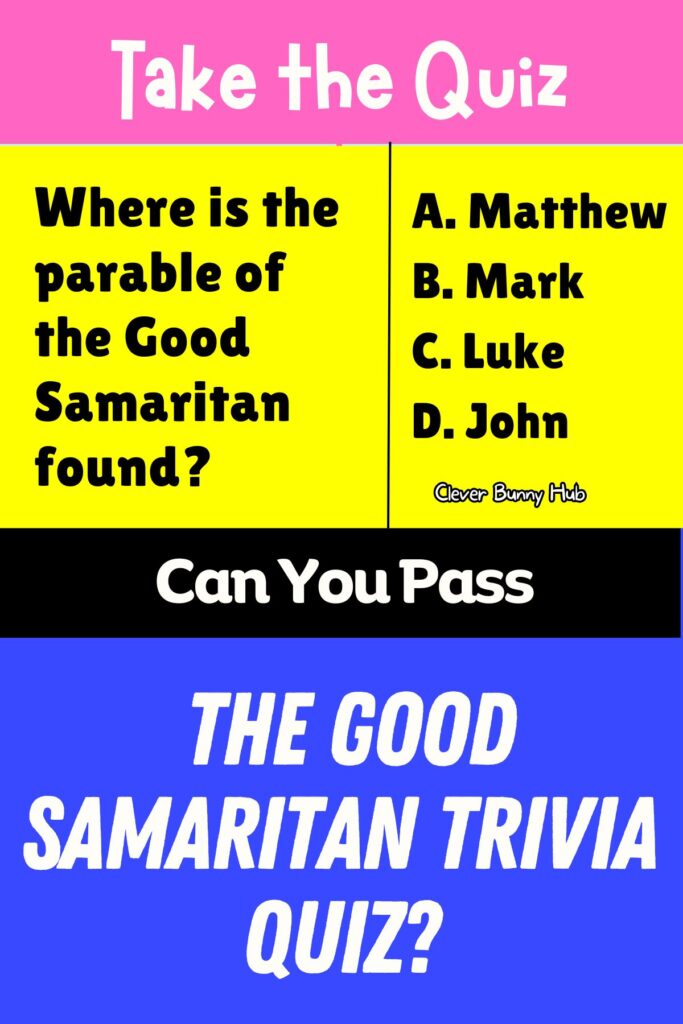In this quiz, we will test your knowledge on the famous parable of the Good Samaritan from the Bible. The story of the Good Samaritan teaches us about kindness, compassion, and helping those in need, regardless of their background or beliefs.
You will be asked a series of questions regarding the people, things that happened, and lessons that are taught in the story in this quiz. You will be able to prove how well you understand the narrative and how it teaches us to love our neighbors as ourselves.
This quiz is not just about testing your memory of a well-known Bible story. It is also an opportunity to reflect on how we can apply the lessons of the Good Samaritan to our own lives and relationships with others. By participating in this quiz, you will have the chance to deepen your understanding of compassion, empathy, and the true meaning of being a good neighbor.
So, are you ready to put your knowledge to the test and see how well you know the story of the Good Samaritan? Let’s get started!
1. Where is the parable of the Good Samaritan found?
A) Matthew
B) Mark
C) Luke
D) John
2. Who asked Jesus, “And who is my neighbor?” prompting the parable?
A) A Pharisee
B) A Sadducee
C) A Lawyer
D) A tax collector
3. In the parable, from where was the man traveling when he was attacked by robbers?
A) Nazareth to Bethlehem
B) Jerusalem to Jericho
C) Galilee to Jerusalem
D) Jericho to Jerusalem
4. What did the robbers do to the man?
A. They killed him
B. They made friends with him
C. They cut his hands
D. They beat him and took his clothes
5. Who was the first person to pass by the injured man?
A) A Pharisee
B) A priest
C) A Levite
D) A Roman soldier
6. Who was the second person to pass by the injured man?
A) A Levite
B) A priest
C) A Samaritan
D) A merchant
7. Who finally helped the injured man?
A) A Jew
B) A Levite
C) A Samaritan
D) A priest
8. What did the Samaritan use to treat the man’s wounds?
A) Water and cloth
B) Wine and oil
C) Herbs and spices
D) Mud and leaves
9. Where did the Samaritan take the injured man for further care?
A) A hospital
B) A synagogue
C) His home
D) An inn
10. How much money did the Samaritan give to the innkeeper?
A) One denarius
B) Two denarii
C) Five denarii
D) Ten denarii
11. What did the Samaritan tell the innkeeper?
A) “Care for him until he wakes.”
B) “I will return to check on him.”
C) “Take care of this man. If you spend more money on him, I will pay it back to you when I come again.”
D) “Send him to my home once he recovers.”
12. Which book of the Bible is often referred to as the “Gospel of Compassion” because of stories like the Good Samaritan?
A) Matthew
B) Mark
C) Luke
D) John
13. What does the Samaritan’s action in the parable demonstrate?
A) Religious adherence
B) Wealth and power
C) True compassion and mercy
D) Political allegiance
14. How is the Good Samaritan often depicted in art?
A) As a wealthy merchant
B) As a simple traveler
C) As a warrior
D) As a king
15. In the context of the parable, what does the journey from Jerusalem to Jericho symbolize?
A) Spiritual decline
B) Economic hardship
C) Physical fitness
D) Cultural exchange
16. Why is the Samaritan’s act considered extraordinary?
A) He was wealthy
B) He was a known healer
C) He defeated common ethnic discrimination
D) He was under no obligation to help
17. What did Jesus say at the end of the parable?
A) “The kingdom of heaven is near”
B) “Your faith has healed you”
C) “Go and do likewise”
D) “Love your enemies”
18. How does the parable of the Good Samaritan define a ‘neighbor’?
A) Someone who lives next door
B) Anyone in need
C) Only fellow countrymen
D) Friends and family
19. What does the oil used by the Samaritan symbolize in Christian tradition?
A) Consecrate, cleanse and make holy
B) Wealth
C) Spiritual purity
D) Joy
20. Which modern concept is heavily influenced by the parable of the Good Samaritan?
A) Medical ethics
B) Environmental conservation
C) Political strategy
D) Economic theory
21. What did the Samaritan ride on?
A) A camel
B) A horse
C) A donkey
D) A chariot
Donkeys were common pack animals, symbolizing the Samaritan’s humble status.
22. What did the lawyer respond when Jesus asked him which of the three was a neighbor to the injured man?
A) “The priest”
B) “The Levite”
C) “He who showed mercy on him”
D) “I don’t know”
23. How is the injured man’s state described after the attack?
A) Barely injured
B) Left half-dead
C) Slightly wounded
D) Completely unscathed
24. What lesson can be drawn from the behavior of the good samaritan?
A) Only help those who belong to your community
B) Avoid getting involved in other people’s problems
C) Prioritize your own safety and convenience over the needs of others
D) Always help others regardless of their background or beliefs
25. Who is the main character in the parable of the Good Samaritan?
A) Jesus
B) A Samaritan
C) A Levite
D) A priest

Don’t be discouraged! Keep studying and you’ll surely improve!

Good job! Keep up the great work and continue to explore the profound lessons of this timeless narrative!

Congratulations! Your outstanding performance demonstrates a deep and thorough knowledge of the parable and its significance.
Related Posts

































